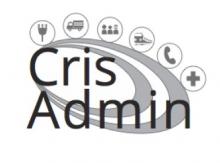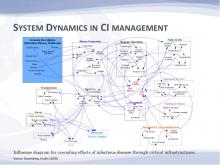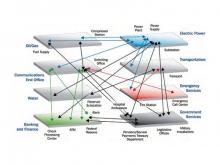CRISADMIN
Critical Infrastructure Simulation of Advanced Models on Interconnected Networks resilience

The CRISADMIN project is aimed to the realization of a tool that will be able to evaluate the impact of large catastrophic events, both natural and man-made, on critical infrastructures. It will form a decision support system, used to experiment and analyze the interdependencies between critical infrastructures and the modalities through which they are affected by predictable and unpredictable catastrophic events (terrorist attacks, natural and industrial disasters).
The model, realized through a sound modelling and simulation methodology, will assess the risks and possible impacts of critical events on quality of life by identifying factors that trigger and enhance the domino effect between the interdependent critical infrastructures and the social system.
The model will be a useful decision support tool to:
- understand and manage the propagation dynamics of the effects of critical events;
- model the structure and dynamics of a social system that directly affects the quality of life;
- assess the risks and possible impacts of critical events on the quality of life;
- simulate the effects of identified policies in order to properly balance back the dynamics of the social system.
The model will be tested by reproducing, in the dynamic model, some real life catastrophic events: this will allow for an experimental validation of the dynamic model.
The project, financed by the Directorate General “Home Affairs” of the European Commission on the 2011 call of the CIPS Programme, involves the following partners:
- DIAG Sapienza – Coordinator (http://www.dis.uniroma1.it/);
- Formit Foundation (http://www.formit.org/);
- Theorematica S.p.A. (http://www.theorematica.it/);
- The Erasmus University of Rotterdam (http://www.eur.nl/english/);
- Euro Works Consulting S.p.r.l. (http://www.eu-works.eu/).
Thus, to increase the security awareness of critical infrastructure operators, CRISADMIN will develop methods, techniques and instruments for operational and training use. By doing this, the project will allow for an exchange and dissemination of information, experience and best practice between EU countries – and between relevant authorities – on the protection of critical infrastructures.
Once developed, the model will be made available – in the form of a prototype decision tool – to institutions and organisations throughout the EU.







